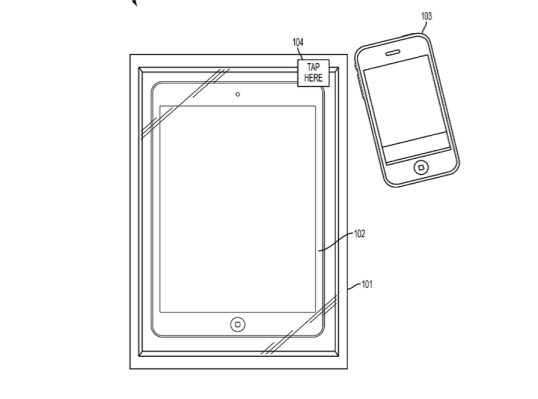Apple has a new patent application (via Patently Apple) that could make it even easier to get started with a new iOS device before you even take it out of the box – using settings from your existing device to configure the new one. If implemented, this could take the sting out of upgrades, or make it even easier to expand your iOS universe with newly acquired additions like iPads, or the Apple Watch.
The new patent application describes packaging that includes a “Tap here” sticker, indicating where a user should tap their existing device. The brand new packaged device would then be able to communicate via some kind of short-range wireless communication method, like Bluetooth or NFC, and transfer settings, lock screen art, user information and even a list of apps to download from the existing gadget to the one in the box.
Apple’s invention includes provisions for multiple power modes for the packaged device. This would allow it to offer both a completely non-powered state, likely used for transport from factory to retail stores or distribution enters, for instance; and a low-power state, whereby it would be able to receive inbound communication requests from a user’s existing device for setup, prompting it to shift into full-power mode.
The patent goes further, discussing situations in which the packaged device would occasionally transmit “discovery messages” in its low power state, perhaps based on a timer, or prompted by activity detected by its internal accelerometer. These could be used to ping owned devices about the setup process once the packaged device is taken home, but it’s also described as being able to facilitate in-store purchases: Meaning, when you pull a boxed iPad off a shelf, it could give you a message on your iPhone asking you to add it to your shopping cart.
It goes further still, suggesting that the communication between the two devices could first ascertain whether the packaged device was actually purchased first, locking it from setup in cases where it determines that it has been stolen instead. It could use transmissions from store staff to authorize it, for example, or pre-shipping authorization for a set email address, if mailed.
The patent is fairly amazing in terms of scope and potential impact on the retail and gadget setup experience, and was only filed in the third quarter of last year, meaning it could very easily still make its way to production devices.
